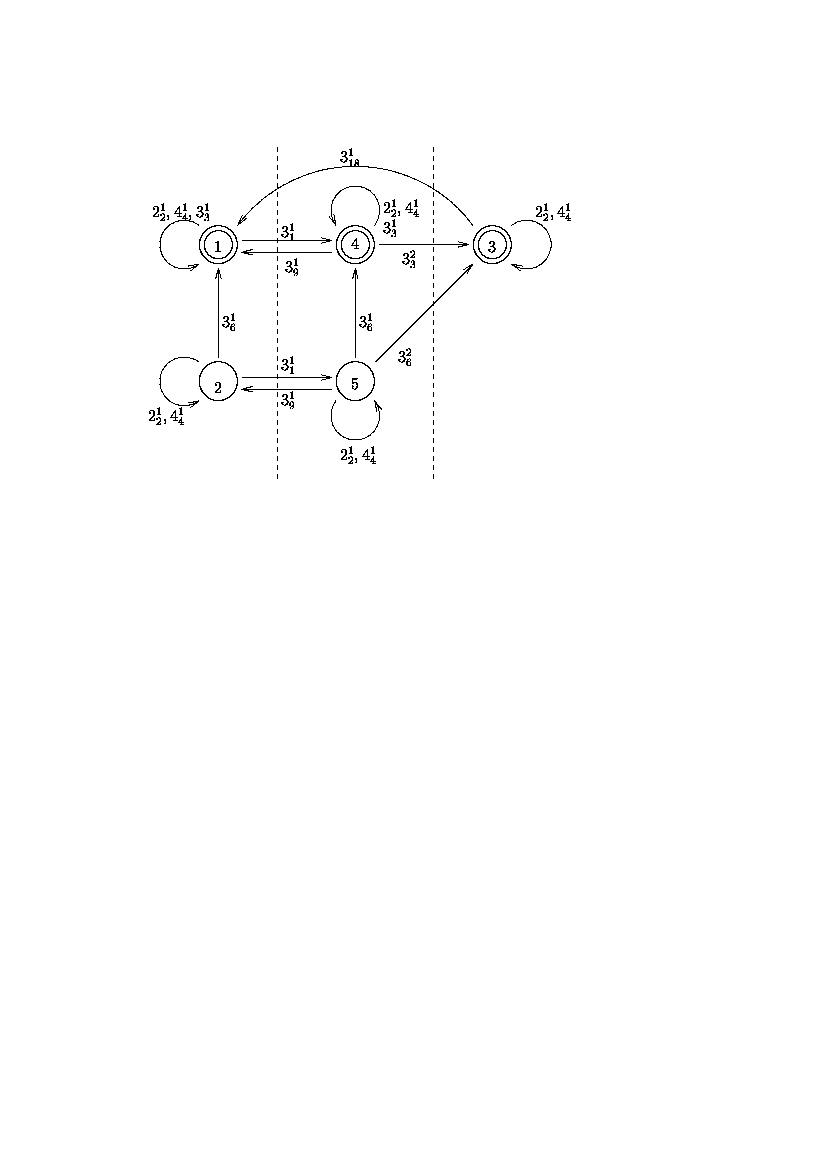#g2as top row. Call
Order -o G >> Gto get the group with the correct order in file 'G'.
Graph Gto get the following output:
father: level 1 number of orbits 1 lengths 2 There are 3 Z-classes with 2 1 2 affine classes! 1: 1 (2, 1, 2^1) 1: 1 (4, 1, 2^2) 1: 1 (3, 1, 3^1) 2 (6, 1, 3^1) 2: 2 (2, 1, 2^1) 2: 2 (4, 1, 2^2) 1: 3 (18, 1, 3^1) 1: 4 (9, 1, 3^1) 2: 5 (9, 1, 3^1) 3: 3 (2, 1, 2^1) 3: 3 (4, 1, 2^2) 3: 4 (3, 2, 3^1) 5 (6, 2, 3^1) 4: 1 (1, 1, 3^1) 5: 2 (1, 1, 3^1) 4: 4 (2, 1, 2^1) 4: 4 (4, 1, 2^2) 4: 4 (3, 1, 3^1) 5 (6, 1, 3^1) 5: 5 (2, 1, 2^1) 5: 5 (4, 1, 2^2) 5 3 1 1 1 0 0 2 0 0 1 0 0 2 1 1 1 0 0 3 1 0 1 0 0 2The program first gives the number of arithmetic/Z-classes in the geometric class and the number of affine classes in each arithmetic class.
The affine classes are consecutively numbered. The first affine class of each arithmetic class consits of symmorphic space groups (affine classes 1,3 and 4).
A row
s: r (u, o, i) R (U, O, I)has the following meaning:
There is an edge from the affine class r to the affine class s with label iuo and an edge form the affine class R to the affine class s with label IUO (i.e.: the index in the group-subgroup-relationship is I, the length of the orbit of the affine normalizer on the supergroups is O and the orbit of the affine normalizer on the subgroups has length U).
The matrix shows the edges of the graph. The 3 in the forth line and the forth column means, that there are three edges from the affine class with number 4 to itself. The 1 in the forth row and the first column means, that there is one edge from the affine class with number 4 to the affine class with number 1.
